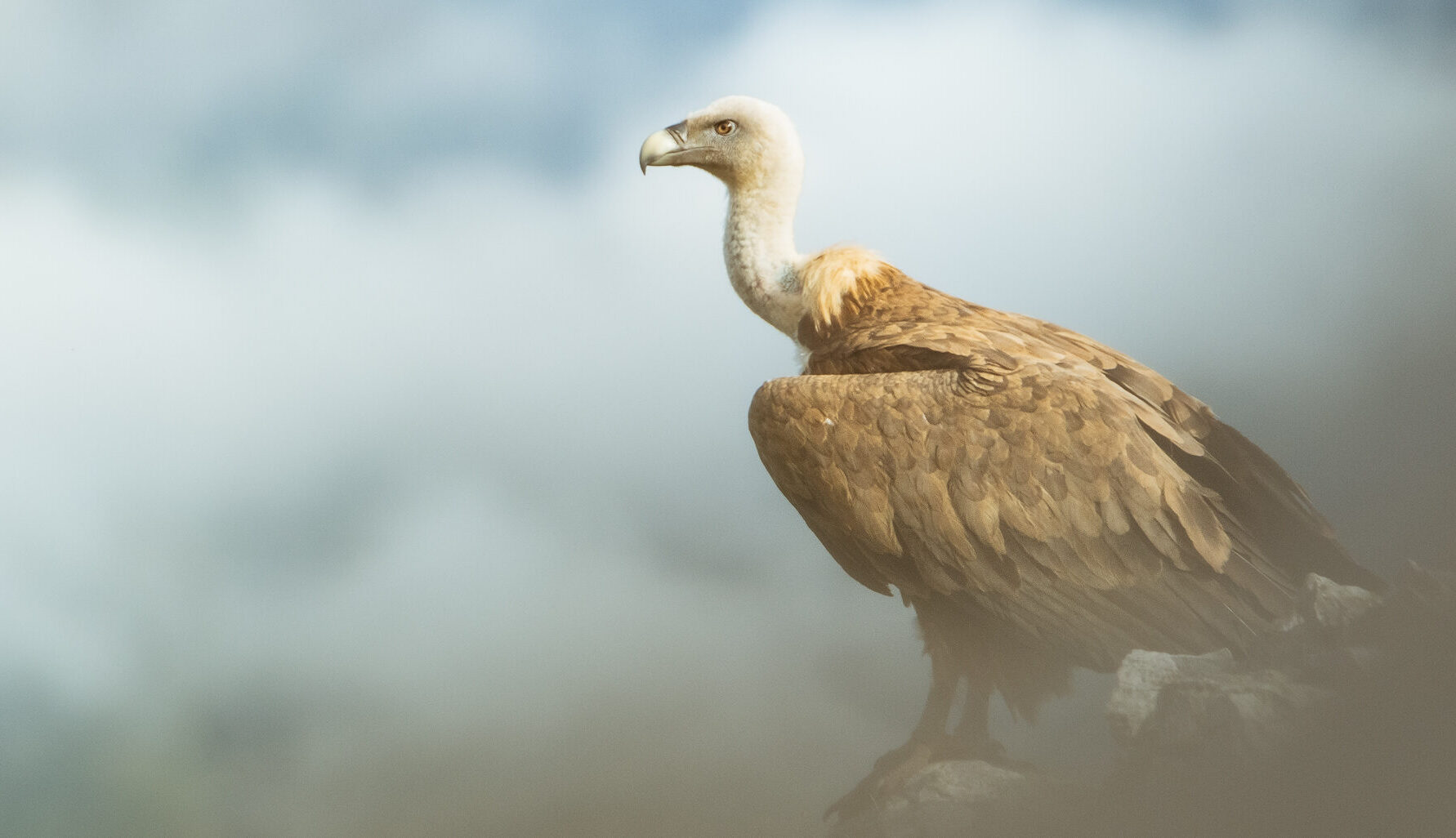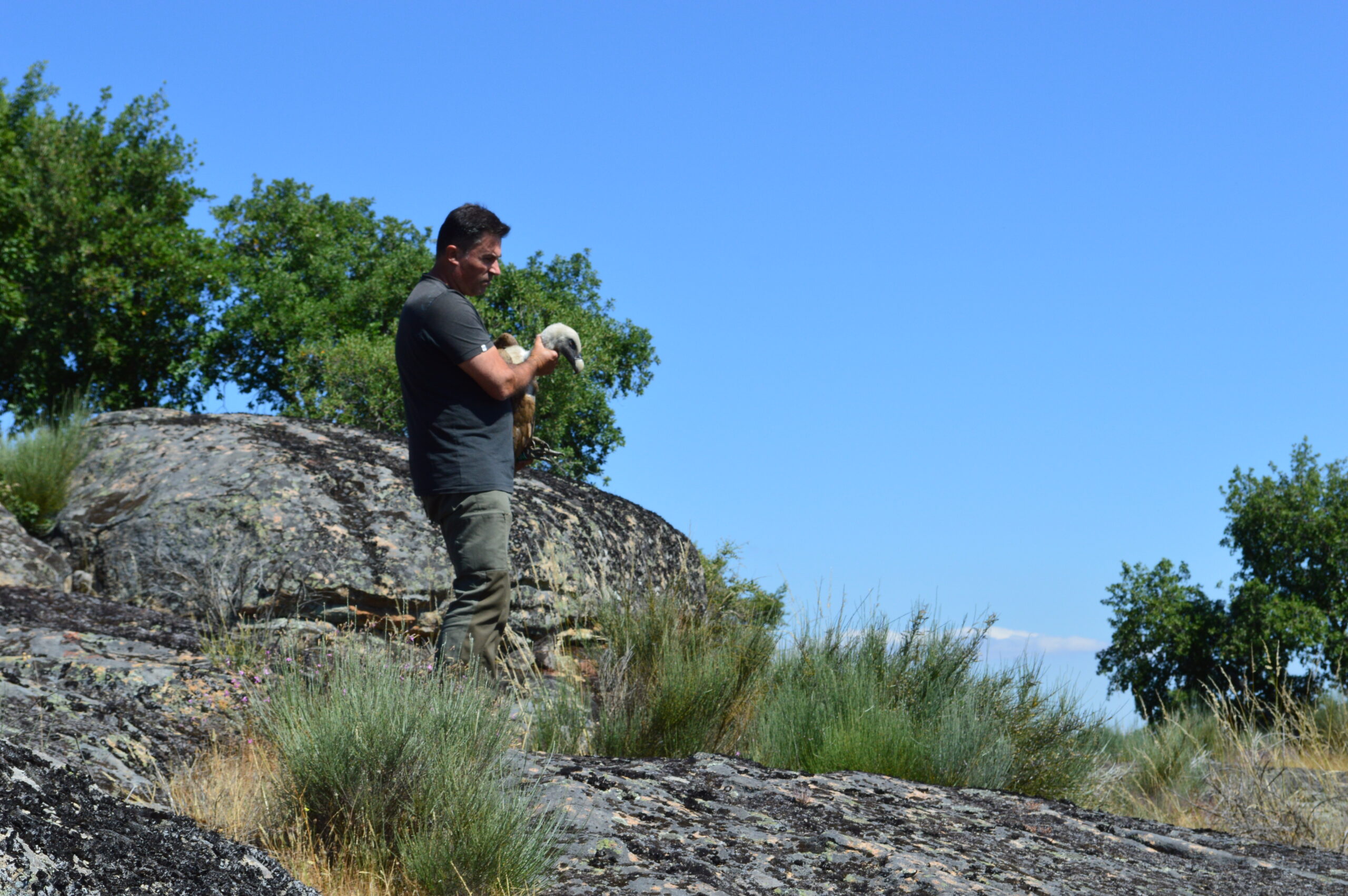Brava is one of the griffon vultures that has been monitored for the longest time under the project Scaling Up Rewilding in the Greater Côa Valley. The information that is being collected about Brava and others allows us to collect important information for the knowledge and conservation of the species, such as its eating habits, and the places it chooses as its roost.

Brava is one of the griffon vultures that is being monitored and monitored within the scope of the project Scaling Up Rewilding in the Greater Côa Valley, thanks to the information that is collected daily by a GPS/GSM transmitter that was placed on it in June 2019. Brava has a nest in Portugal, in the municipality of Figueira de Castelo Rodrigo, close to the Côa Valley Special Protection Area and the Douro International Natural Park. Although it spends some of its time and feeds in the Côa Valley, its favorite food places are in Spain, sometimes more than 360 kilometers from the nest, spending several days in a row across the border.
The griffon vultures have preferential areas, where they spend most of their time and which they visit several times throughout the year. These areas of more regular use are part of the animal’s vital area. In addition to these frequently visited areas, the griffon vultures make exploratory flights to new areas in search of food. Sometimes, during these exploratory movements, the animals find areas of high interest that they start to visit regularly, becoming part of their vital area. This exploratory behavior varies between individuals, with some birds making few exploratory movements and showing very small vital areas, and other birds flying hundreds of kilometers in search of new areas.
We can see this clearly with Brava. This bird always prefers to travel south. In fact, the northernmost point it visited is just 10 kilometers from his nest. Its vital area is greater in summer, during the breeding period than in autumn, with areas of greatest use exceeding 12,000 square kilometers in the first case compared to around 4,000 square kilometers in the second. These values are much higher than the remaining four monitored vultures, which use areas close to 4,000 square kilometres. Brava’s willingness to make exploratory movements is also notorious, having covered more than 60,000 square kilometers since the beginning of its monitoring, much more than the other birds monitored, which covered about 11,000 square kilometers.

An example of Brava’s great cross-border voyages was found in June last year, when in three days it traveled over 600 kilometers from the Serra de Hornachuelos Natural Park (Córdoba, Spain) to its nest near Figueira de Castelo Rodrigo. On these trips to Spain, it always uses the Côa Valley corridor until he reaches the Tagus, when he varies his routes, looking for food.
During this two-year period, visited seven feeding camps for scavenger birds, having fed only once in each, five of them in Spain and only two of them in Portugal. The data also show that he stayed overnight in two of them. However, most of the times Brava, like the other monitored birds, finds food in areas with extensive livestock, in cork oak landscapes consisting of open forests and pastures, feeding on the carcasses of animals that die.
As for places where it slept, in addition to its colony, it is known that slept in 22 different places (so-called “roost”), including in different colonies adjacent to the colony. It’s not know the reason why it slept in different colonies during the breeding season, instead of always being close to its nest, which is even close to the roost where it spent the night. Vultures can either sleep close to their nests during the breeding season or outside, especially when they are on a trip to look for food, but even then they regularly choose the same places they are used to.
One of the main reasons is that when the weather is bad, they do not fly and have to choose a safe place to spend not only the night, but also most of the day, being therefore very selective in this choice, as they may have of being two or even more days sheltered from storms in the same place. On one of its last trips back from Spain, it is known that Brava purposely detoured its route of 30 kilometers to each side, just to spend the night in a dormitory that it has been using for a long time, which demonstrates this habit that the vultures create to certain places they use to spend the night.
“Brava is a fascinating animal, which can fly hundreds of kilometers in a single day, but that makes monitoring it very difficult”, reveals Pedro Ribeiro, field officer at Rewilding Portugal. “Recently it has been spending several weeks in a row in Spain, only coming back to Portugal for 4-5 days and using 3 different places to sleep. When arrives in Portugal we have to drop everything to go look for it and make sure it is in good health and which is reproducing normally. In the last 2 months we have only been able to see it once”, he concludes.

Rewilding Portugal is mapping these dormitories and will share the information with the Portuguese and Spanish authorities, as it is relevant for land use planning. Dormitories are places where disturbances must be minimized, avoiding changing the use of the territory and the presence of infrastructure.
You can follow Brava’s trips through the interactive map present here.